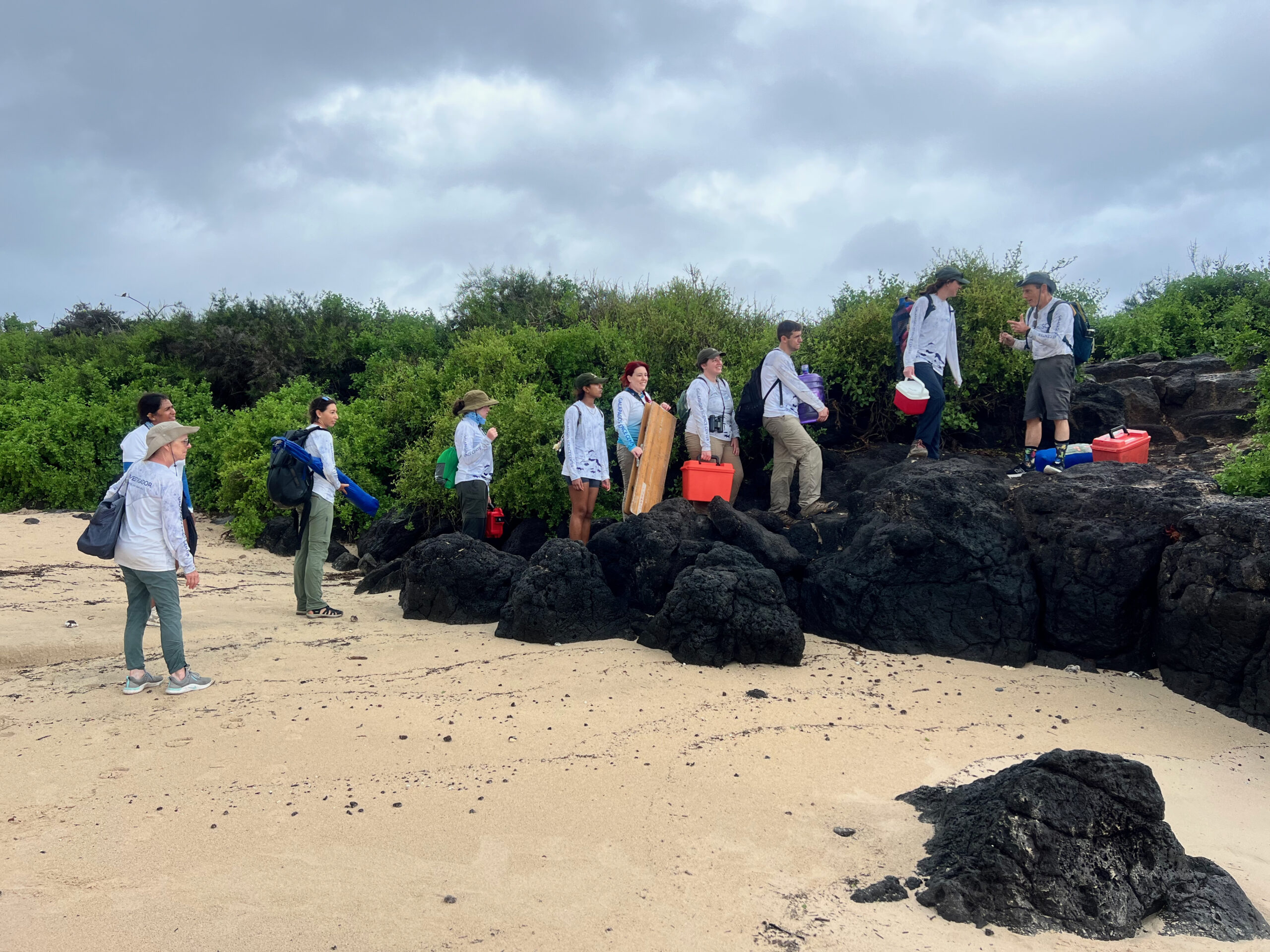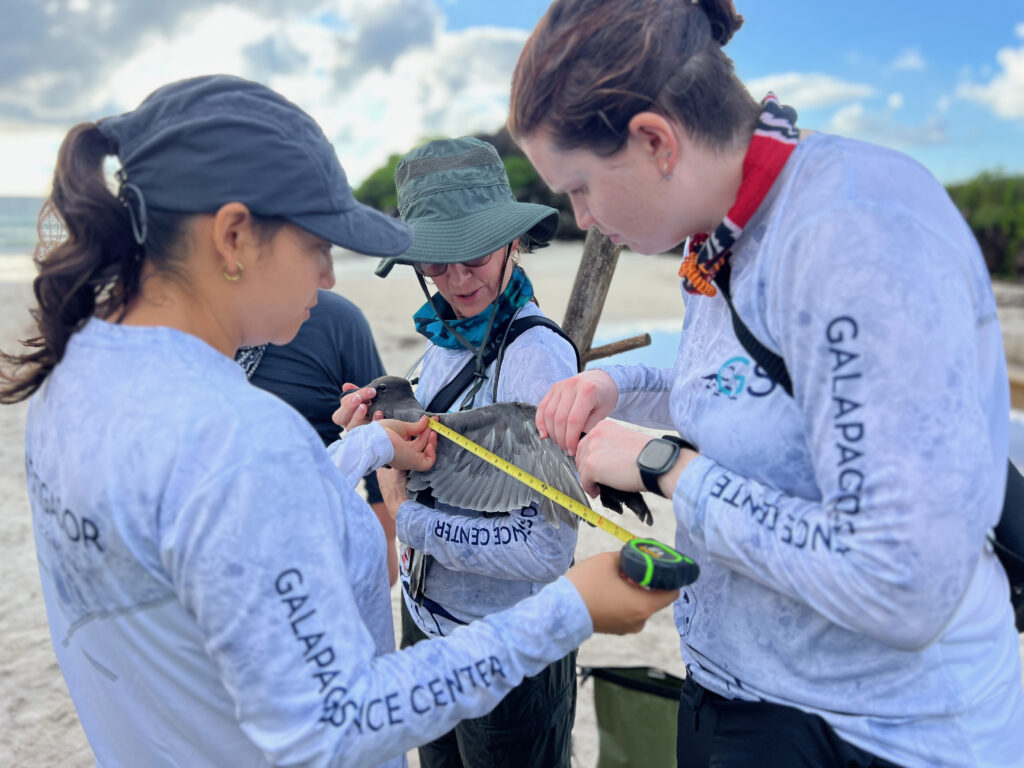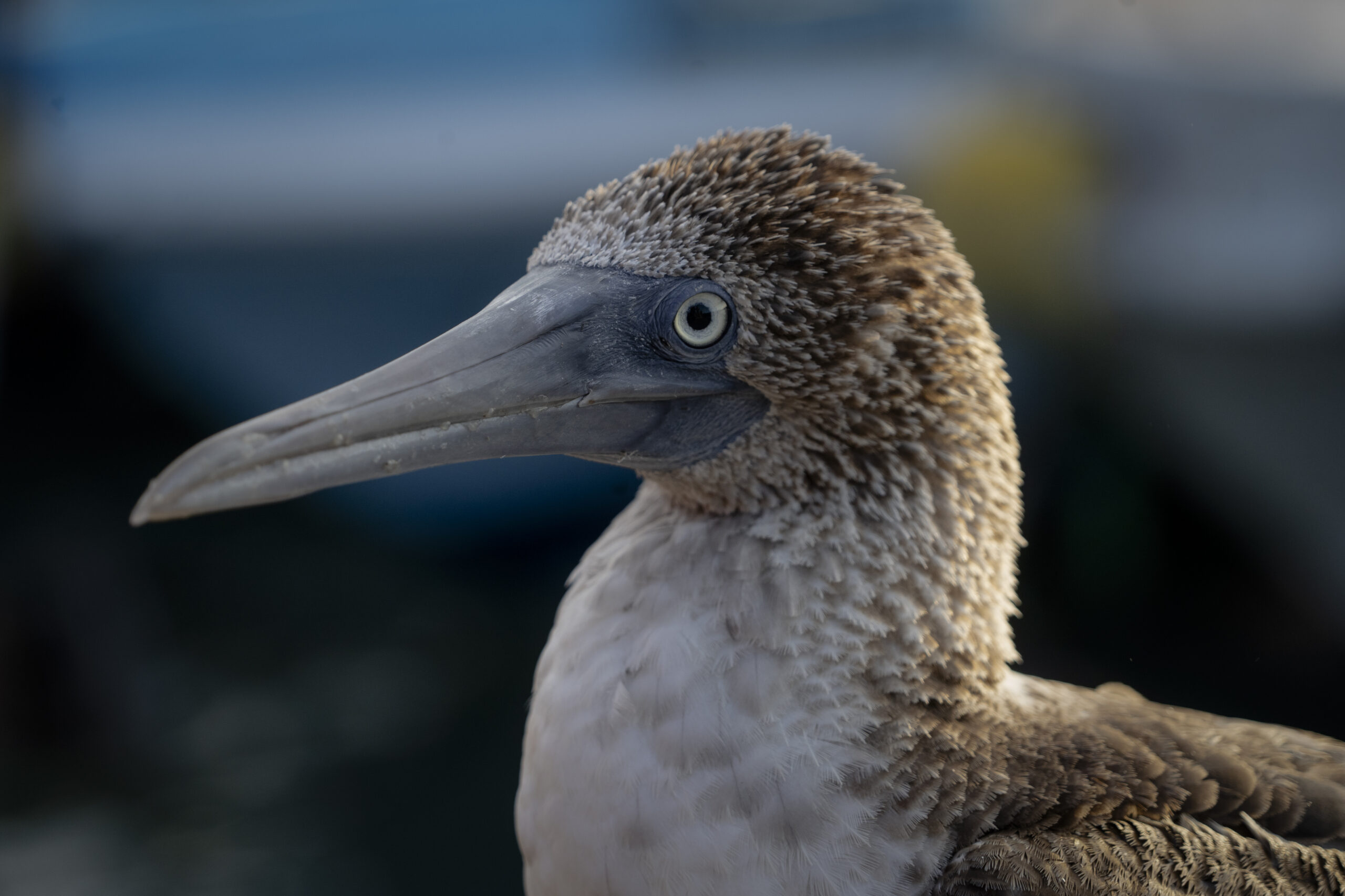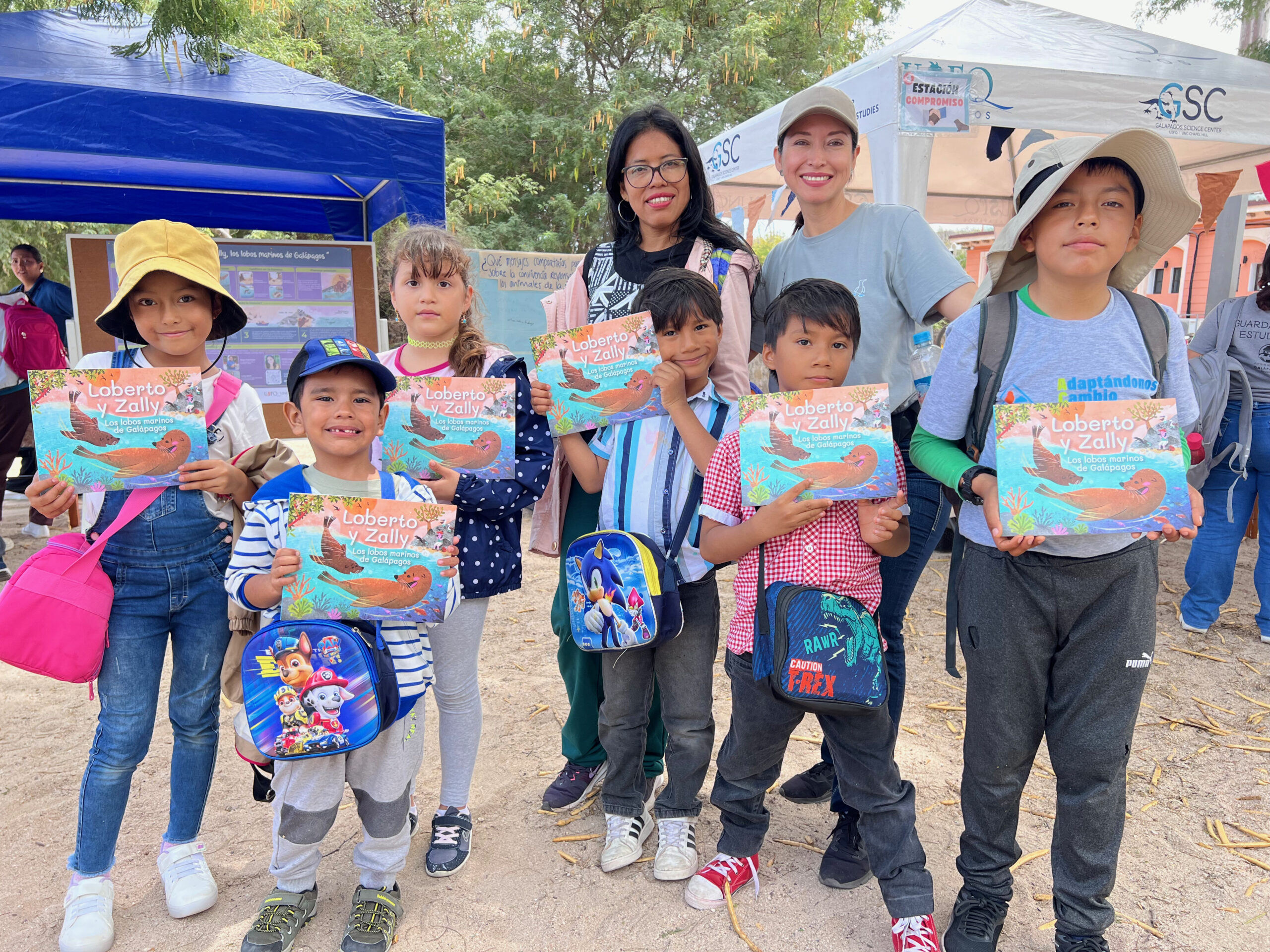El programa ISLAVET concluyó con éxito su décima edición, consolidándose como una iniciativa importante para la ciencia y la conservación en el archipiélago. En esta ocasión, un equipo de 33 personas, compuesto por 23 estudiantes de veterinaria y 10 veterinarios de Estados Unidos, Australia, Reino Unido, Singapur y la Escuela de Veterinaria de la Universidad San Francisco de Quito, participó en investigaciones de campo bajo la dirección de Juan Pablo Muñoz-Pérez, Diana Deresienski, Gregory Lewbart y Daniela Alarcón, del Galapagos Science Center (GSC).
ISLAVET es un programa anual dirigido a estudiantes y profesionales, en colaboración con instituciones como el GSC, North Carolina State University, la Universidad San Francisco de Quito, University of North Carolina at Chapel Hill y la Dirección del Parque Nacional Galápagos. Su propósito principal es la investigación en salud y conservación de la fauna silvestre del archipiélago, combinando trabajo de campo y análisis en laboratorio.

Desde su creación en 2016, ISLAVET ha evaluado el estado de salud de diversas especies en Galápagos, incluyendo tortugas gigantes, tiburones, cangrejos Sally Lightfoot, lagartijas y aves marinas. Además, ha desarrollado estudios sobre poblaciones de cetáceos e iguanas marinas, analizando en estas últimas su respuesta a eventos climáticos como El Niño.
En su décima edición, el programa llevó a cabo siete proyectos de campo, cuyos resultados serán publicados para garantizar el acceso abierto a estos hallazgos y contribuir al conocimiento científico global.
Gracias al esfuerzo y dedicación de todo el equipo, ISLAVET sigue fortaleciendo la investigación científica en Galápagos y formando a una nueva generación de veterinarios comprometidos con la conservación.

Accede a los papers y descubre los estudios aquí:
Dubiner S, Muñoz-Pérez JP, Alarcon-Ruales D, Cohen E, Deresienski D, Hirschfeld M, Levin E, Lohmann KJ, Meiri S, Lewbart GA. Changes in marine iguana (Amblyrhynchus cristatus) heart rates suggest reduced metabolism during El Niño events. Accepted, Journal of Zoology, January 6, 2025. https://doi.org/10.1111/jzo.13254
Cave A, Dillard JR, Ulloa C, Muñoz-Pérez JP, Skehel A, Deresienski D, Passingham RK, Castaneda J, Lewbart GA, Valle CA. Health assessment of blue-footed boobies (Sula nebouxii excisa) determined by hematology, biochemistry, blood gases, and physical examination in the Galápagos Islands. Accepted JZWM, November 26, 2024.
Kaleel K, Secoura PL, Muñoz-Pérez JP, MS, Alarcón-Ruales D, Vallejo F, Miranda C, Lewbart, GA, Kathy Townsend K, Vaden SL. 2023. Endoscopy and rectal enema for fecal collection in wild sea turtles (Chelonia mydas, Eretmochelys imbricata) in a field setting. Zoo Biology.https://doi.org/10.1002/zoo.21805
Rhea S, Gensler C, Atlaw N, Pairis-Garcia M, Lewbart GA, Valentine A,
Marilyn Cruz M, Castillo P, Velez A, Trueba G, Jacob M. Presence of extended-spectrum beta-lactamase-producing Escherichia coli in food producing and companion animals and wildlife on small-holder farms of Floreana Island, Galápagos Islands. Accepted, Vector-Borne and Zoonotic Diseases, August 3, 2023.https://doi.org/10.1089/vbz.2023.0044
Capobianco C, Clarke EA, Lewbart GA, Muñoz-Pérez JP, Alarcón Ruales D, Loyola A, Torres Ayala S, Guzman KE, Valle C. 2023. Hematology and biochemistry of the Española lava lizard (Microlophus delanonis). Journal of Herpetological Medicine and Surgery 53(3):392-395.https://doi.org/10.5818/JHMS-D-23-00002
Gregory TM, Livingston I, Hawkins EC, Loyola A, Cave A, Vaden SL, Deresienski D, Breen M, Riofrio-Lazo M, Lewbart GA, Paez-Rosas D. 2023. Dirofilaria immitis identified in Galapagos sea lions: A wildlife health and conservation concern. Journal of Wildlife Diseases 59(3): 487-494.https://doi.org/10.7589/JWD-D-22-00119
Rhea S, Camacho BE, Amoriello CW, Correa M, Lewbart GA, Cruz M, Vélez A, Castillo P, Pairis-Garcia M. 2023. Assessing Animal Welfare on Small-scale Multi-species Farms Located on Floreana Island, Galápagos Islands. Animals 13:686 https://doi.org/10.3390/ani13040686
Muñoz-Pérez JP, Lewbart GA, Alarcon-Ruales DE, Skehel A, Cobos E, Rivera R, Jaramillo A, Vivanco H, Zurita-Arthos L, Wallace BP, Valle CA, Townsend KA. 2023. Galápagos and the plastic problem. Frontiers in Sustainability. https://doi.org/10.3389/frsus.2023.1091516
Masterson CA, Locklear TR, Páez-Rosas D, Muñoz-Pérez JP, Ortega C, Lewbart GA, Vaden SL. 2022. Intraocular pressure using rebound tonometry in the San Cristóbal Galápagos tortoise (Chelonoidis chathamensis). International Journal of Veterinary Research. 2(1):13-18.
Gregory TM, Parker M, Deresienski D, Alarcón-Ruales D, Muñoz-Pérez JP, Torres J, Gavilanes GI, Lewbart GA, Páez-Rosas D. 2022. Evaluating the possibility of transfusion medicine, through crossmatching in juvenile Galapagos sea lions (Zalophus wollebaeki). Frontiers in Veterinary Science. 9: 830272. https://doi.org/10.3389/fvets.2022.830272
Souza AR, Huffman AM, Muñoz-Pérez JP, Vaden S, Diaz R, Vasquez G, Donnelly KA, Páez-Rosas D, Lewbart GA. 2021. Crossmatching the San Cristóbal Galápagos tortoise (Chelonoidis chathamensis). Journal of Herpetological Medicine and Surgery 31(4): 315-320. https://doi.org/10.5818/JHMS-07-2020
Dass K, Lewbart GA, Muñoz-Pérez JP, Yépez M, Loyola A, Chen E, Páez-Rosas D. 2021. Evaluation of fatty acid whole blood concentrations in the San Cristóbal Galápagos tortoise (Chelonoidis chathamensis). PeerJ 9:e11582 https://doi.org/10.7717/peerj.11582
Tucker-Retter E, Velsey-Gross Z, Deresienski D, Ulloa C, Muñoz-Pérez J-P, Skehel A, Passingham RK, Castaneda J, Lewbart GA, Valle CA. 2021. Health status of Nazca boobies (Sula granti) on Daphne Major Island in the Galápagos determined by hematology, biochemistry, and physical examination. Journal of Zoo and Wildlife Medicine. 52(2): 671-679. https://doi.org/10.1638/2020-0136
Cerreta A, Vaden SL, Lewbart GA, Muñoz-Pérez JP, Páez-Rosas D. 2019. Increased BUN and glucose in a group of San Cristóbal Galapagos tortoises (Chelonoidis chathamensis). Vet Rec Case Report 7:3000699. https://doi.org/10.1136/vetreccr-2018-000699
Valle CA, Ulloa C, Deresienski D, Regalado C, Muñoz-Pérez JP, Garcia J, Hardesty BD, Skehel A, Lewbart GA. 2018. Health status of great frigatebirds (Fregata minor) determined by hematology, biochemistry, blood gases, and physical examination. Conservation Physiology.https://doi.org/10.1093/conphys/coy034
Gregory A Lewbart, John A Griffioen, Alison Savo, Juan Pablo Muñoz-Pérez, Carlos Ortega, Andrea Loyola, Sarah Roberts, George Schaaf, David Steinberg, Steven B Osegueda, Michael G Levy, Diego Páez-Rosas, Biochemistry and hematology parameters of the San Cristóbal Galápagos tortoise (Chelonoidis chathamensis), Conservation Physiology, Volume 6, Issue 1, 2018, coy004.https://doi.org/10.1093/conphys/coy004
Cerreta, Anthony & Diaz, Rafael & Vasquez, Gabriel & Muñoz-Pérez, Juan & Páez-Rosas, Diego & Lewbart, Gregory. 2018. Methods of body temperature assessment in Chelonoidis chathamensis (San Cristóbal Galápagos tortoise). Herpetological Review. 49. 696 – 697.




